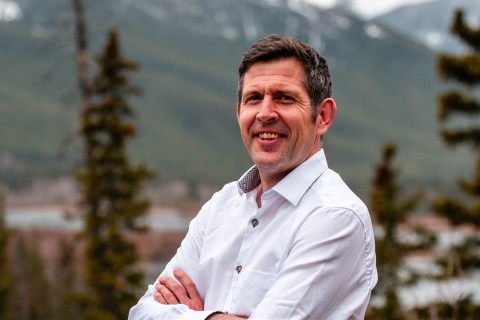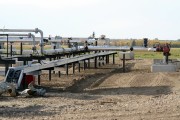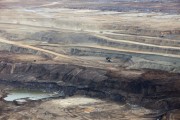There are no toxic tailings lakes, dead ducks, heavy-hauler trucks or strip mines visible from space: there's none of that associated with in situ oilsands development. So, as industry tells us, in situ oilsands development is nothing to worry about, right? Not quite, according to a new report evaluating in situ oilsands' real impacts.
While mining is currently the main method used to develop Alberta's oilsands, in situ techniques could eventually allow access to the 80 per cent of those oilsands deposits too deep to mine. In situ, or "in place," extraction involves drilling wells into the deposit, then melting the bitumen with steam so it can be pumped to the surface. We haven't had a good idea, until now, just what the environmental impacts of in situ are -- or the wide range in environmental performances within this industry.
Drilling Deeper, a first assessment and report card released on Wednesday by the Pembina Institute, gives us more information about those impacts, and the findings fly in the face of what some in industry and government have been telling us.
Upon evaluating nine in situ operators, preliminary indicators show greenhouse gas and sulphur dioxide emissions are higher for in situ than for mining. Some in situ projects also have higher total water use intensities than the average for mining. And the land use impacts (for example, fragmented forests from the construction of roads, wells and pipelines) are serious too, likely contributing to the loss of caribou populations in northern Alberta.
That's not the message we've been hearing though.
Many in situ operators want us to draw a distinction between mining and in situ operations. They're trying to establish in situ oilsands development as a less risky form of oilsands development that doesn't deserve the same scrutiny as oilsands mining, and there is even talk about reducing environmental assessment and fast-tracking the in situ approval process. Speaking tours have taken place across Canada and the U.S. promoting in situ as a step up from mining.
In response to shareholder concerns over a $10-billion investment in the oilsands, the CEO of British Petroleum went so far as to refer to its in situ interests as "environmentally sustainable."
Federal Environment Minister Jim Prentice has been focusing on deflecting criticisms regarding the oilsands too, rather than resolving them, vowing recently to "up our game . . . in terms of our communication efforts."
Our report card on the performance of in situ oilsands industry reveals there is plenty of room for improvement. When we compared nine in situ oilsands operations on 17 environmental indicators grouped in five categories, including general environmental management, land impacts, air emissions, water use and climate change, we found big gaps across the sector. Scores from nine in situ projects averaged 44 per cent, but showed that if industry just applied currently available environmental best practices, those scores would shoot up to 85 per cent.
Companies lagged in some key areas. Only one operator had plans for reducing air emissions and water use beyond weak regulated requirements and no companies had targets to reduce greenhouse gas emissions. Only two of nine operators invested in biodiversity offsets to compensate for the impacts of their facilities. Only two of nine companies have third-party accredited environmental management systems and only three companies financially support a provincewide biodiversity-monitoring program.
The report card made one thing clear: calling in situ a low impact form of oilsands development is not accurate -- it's a myth. And the impacts shouldn't be underestimated when the scale of this kind of development is huge.
While more than 4,000 square kilometres of northern Alberta land has been leased for mining, 80,000 square kilometres has been leased for in situ development. That's an area 12 times the size of Banff National Park.
There are ways to improve, and we provide recommendations in our report, including greater transparency from industry on environmental data, a stronger commitment by industry to reduce environmental impacts and stricter rules from government to ensure best practices are implemented and the environment is protected. Many of these improvements come from industry's own stated best practices -- practices they need to start implementing.
Were industry to employ its own best practices, they could not only improve their environmental performance, but their reputation as well. So, how about this? Let's fight attacks on Alberta's environmental reputation by scrapping the ramped up public relations efforts and focusing on addressing the unresolved environmental impacts.
Simon Dyer is the director of the Oilsands Program at the Pembina Institute and coauthor of Drilling Deeper: The In situ Oilsands Report Card.
The report is available at www.pembina.org/pub/1981.





